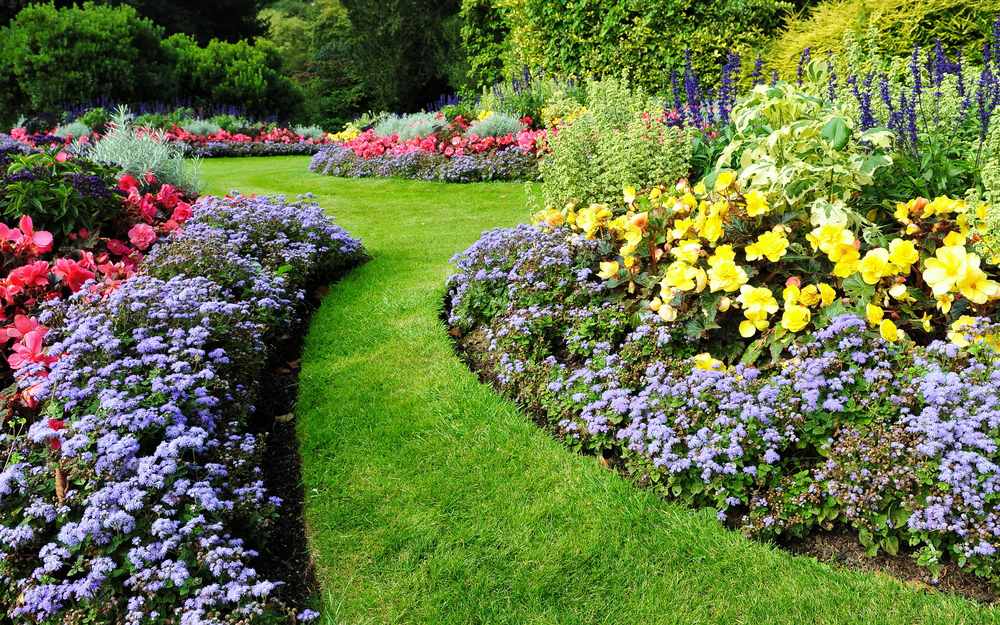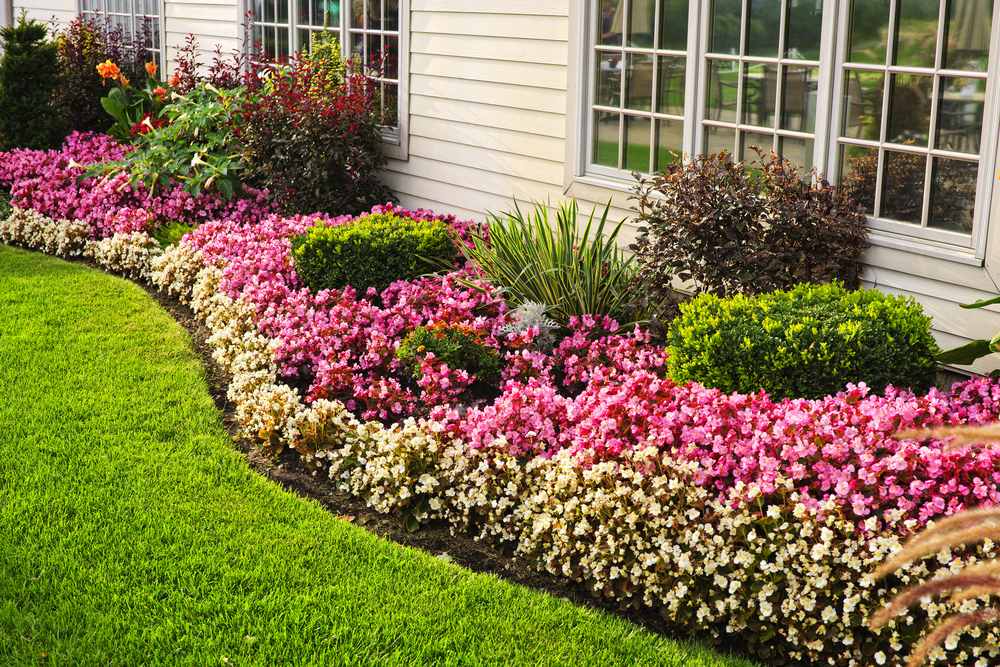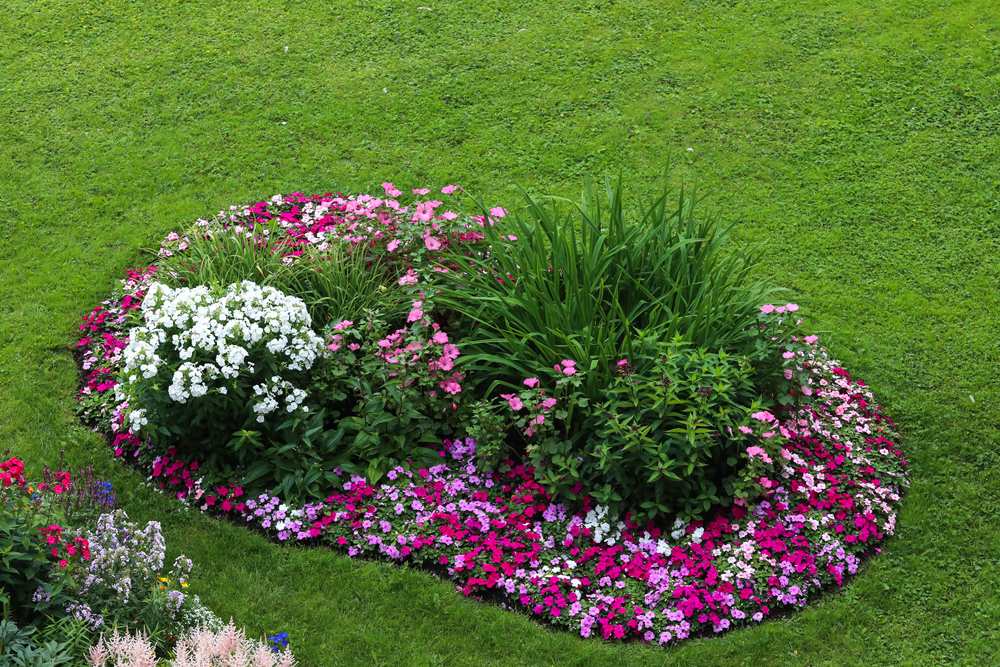
Do you plan your flower color combinations? Or do you choose the ones you like and plant them without considering a garden color palette? If you’ve ever desired a certain mood or feeling in your garden, incorporating garden color schemes can help. It takes some planning, but it pays off.
You may want a calming garden space where you can sit when you need a little peace. Or you might prefer lively flower beds around your patio where you entertain guests and want them to feel upbeat and happy. You can achieve either by knowing how garden color schemes work.
Understanding Color Theory
Artists and designers often use color theory when they create their works. It is a collection of guidelines that help creators use the appropriate color schemes to communicate their message to the intended audience. Understanding the concept can help you with your garden color schemes.
Temperature
Colors come in warm and cool tones, and each portrays a different feeling in your garden. Warm colors are red, yellow, and orange. Cool colors are purple, green, and blue. However, colors can have tints that change them, such as a cool pink or a warm green. You’ll want to consider that when planning your garden color schemes.
Generally, a cool color will be calming and nurture a welcoming atmosphere, and a warm color will be lively. But, again, the individual hues can change these rules somewhat.
Contrast
Colors that are close together on the color wheel – blue and green, for example – offer low contrast for garden color schemes. That makes them generally more relaxing on the eyes. On the other hand, colors opposite each other on the wheel – yellow and purple – are high contrast and add excitement.
You can also use contrast to highlight certain areas for your garden color schemes. If you plant your entire garden in shades of blue and have one area of red flowers, that spot will pop. You can use this to your advantage if you have a sculpture or water feature in one part of your garden to which you want to draw attention.
How to Choose Garden Color Schemes

Understanding color theory is only the first step to getting the right garden color schemes for your home.
Choose Your Mood
The first step in planning your garden color schemes is to choose the mood you’re going for. Remember that this can be different in separate areas of the garden, so consider a mood for each.
If you have a tranquil pond in your garden and want a relaxing zen area around it, pick cool colors and low contrast for that area. Doing so allows the eye to move more slowly and gives a restful vibe.
Of course, you might want garden color schemes to give your gazebo a party vibe perfect for entertaining guests. You can select warmer colors with more contrast to raise the excitement and energy in this area.
Monochromatic Garden Color Schemes
Monochromatic garden color schemes don’t mean that all the flowers have to be the same hue. That tends to make a dull garden. But if you choose purple as your monochromatic color, you may have flowers of the entire purple spectrum. These could range from deep bluish purples to warmer reddish purples.
Having varying hues as part of your garden color schemes adds interest, and different kinds of flowers will naturally vary. You can add neutral white flowers to a monochromatic garden for additional interest or to brighten up darker blue or purple garden color schemes.
Analogous Flower Color Combinations
Analogous flower color combinations are the closest scheme to monochromatic. But, instead of a single color, it incorporates the colors next to that color on the wheel. For instance, if you chose red, its analogous colors would be red-violet and red-orange.
Using analogous garden color schemes gives a little more variety than a monochromatic theme. It also allows you more variety of flower options since some flowers only grow in specific colors. Like monochromatic, though, analogous garden color schemes will usually have a calmer mood as there is little contrast.
Complementary Garden Color Palette
Complementary colors are located directly opposite each other on the color wheel. For example, blue and orange are complementary colors, as are purple and yellow and yellow-green and red-violet.
Typically, complementary garden color schemes are high contrast and convey excitement and energy. You can choose bright plants for a garden color palette with maximum contrast or pick muted hues of some flower color combinations to tame it a bit.
Triadic Color Scheme Landscapes
Triadic color scheme landscapes use three colors that are equidistant on the color wheel. Examples would be red, yellow, and blue or orange, green, and purple.
These garden color schemes tend to be overwhelming when used at their full brightness or in equal amounts. It’s best to choose one or two of the colors to use in a muted tone. You could select two of the colors to be the primary colors in the garden and only use pops of the third color. These tricks for garden color schemes will keep from overwhelming the eye with too much bright color.
Gradients for Dramatic Gardens
Gradient garden color schemes can be more involved to plan out, but they are truly beautiful when done well. One example would include going from yellows at one end of your garden to orange in the middle and red at the other end.
You’d find similar effects by blending white at one end, cream in the middle, and bright yellow at the far end. Gradient color scheme landscapes work best with larger or longer greenspaces and can lead the eye across your garden.
You’ll want to choose flowers carefully when doing gradients for your garden color schemes since the effect depends on a gentle blending from light to dark or one color to another. The result is still well worth the effort.
Consider the Background
One final item to consider when planning your garden color schemes is the background. Do you have a blue garden shed or a yellow picket fence near your garden? Try to work those colors into your plan for those areas.
If you want a soothing monochromatic blue garden and plant it in front of a rusty-colored deck, you suddenly have a high-contrast space with complementary colors.
Similarly, a color scheme landscape that features bright yellow and purple can become too busy if planted against a blue-green house. These garden color schemes are fun only so long as you avoid throwing a third bright shade into the mix.
You can make this concept work in your favor. Paint your fence a color that goes with your garden color schemes. Coordinate the seats and umbrellas of the furniture in your patio area with the colors you’ll plant. Choose landscape rock in a hue that goes well with your plan.
Garden Color Schemes Make the Most of Your Landscape

Color is a fun way to encourage specific feelings in your unique garden spaces, whether for yourself or your guests. When planning flowers, consider the mood you want to guide your garden color palette. If you enjoy having the entire rainbow of flowers in your garden, you can still have them all. But a little strategic placement will yield better results than mixing them all at random.
At Architecture Landscape Design, we know how transformative color can be for turning a garden into a peaceful, relaxing oasis. Our wide selection of beautiful plants and flowers can give you the perfect garden color schemes to realize the greenspace of your dreams. We work with you to help ensure your landscape vision is made a reality.
Contact ALD today to learn more about our services and get a free consultation.
